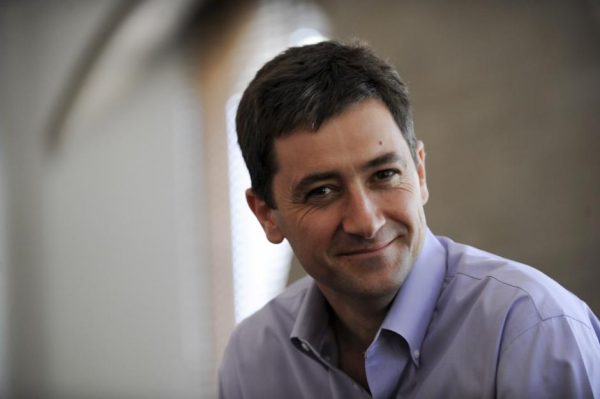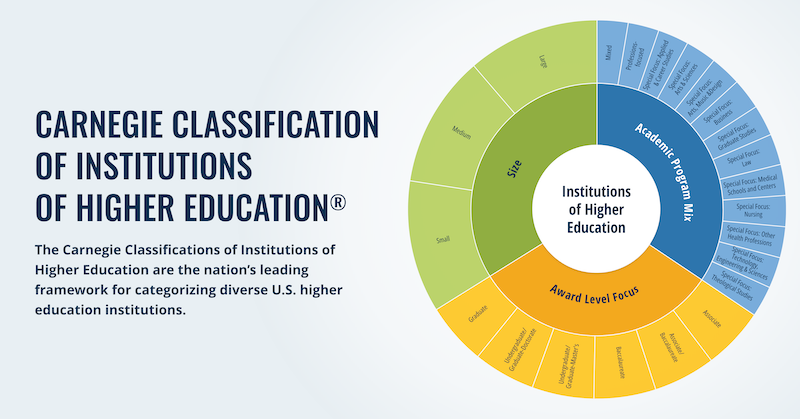Q&A With Carnegie President Timothy Knowles
What inspired you to come to Carnegie?
Three main things drew me to the Carnegie Foundation. First, Carnegie’s history. For more than a century, the Foundation has had a remarkable impact on the quality of American schooling. The earliest endeavor, to establish TIAA, ensured financial security for generations of teachers, faculty, and nonprofit employees nationwide. Since then, Carnegie has been an instrumental force in making the American higher education system one of the best in the world—establishing high standards, catalyzing pathfinding policy, and advancing groundbreaking practice. Most importantly, the Foundation has been an engine for equity. It has enabled millions of Americans from under-resourced communities to succeed in school, college, and life. Most recently, it has made improvement—arguably the most important driver for achieving equity—to the daily work of schools, nonprofits, and universities across the nation.
The second thing that drew me here is the people. The trustees, staff, and senior fellows are expert, open-minded, and courageous—a rare and wonderful confluence of thinkers and doers.
The third magnetic force is Carnegie’s potential. Our history, people, and reputation represent a powerful opportunity to make America a better version of itself. At its root, education is the best methodology for addressing the biggest challenges we face—whether economic and racial justice, the condition of the environment, or our democracy. With imagination, pertinacity, and a sharp focus on the evidence that matters most, I am confident that the next chapter of Carnegie will be as significant as those that have come before.

Photo credit: Dan Daly
Carnegie President Timothy Knowles
What lessons learned from the Academy Group and at the University of Chicago do you bring to Carnegie?
Work at the Academy demonstrates what it means for an educational institution to be dedicated, first and foremost, to achieving educational, racial, and economic justice for those they serve. Doing so demands that learning is rigorous and joyful. There must be clear, scaffolded pathways for young people through school, college, and into careers. Students must solve real problems—learning to think critically, collaborate openly, and demonstrate determination at every turn. And continuous improvement must be central to the daily work of practitioners. When we do those things, particularly in places serving young people from the nation’s most resilient communities, we rise.
A second learning I bring from Chicago is the power of working across borders. In the natural world, new forms of life are frequently discovered at the boundaries of ecosystems—where the forest meets the savanna or sea meets soil. The same is the case with ideas. Some of our greatest intellectual breakthroughs have occurred where disciplines intersect—between biology and engineering, sociology and education, art and science. The same is also true for achieving exceptional results for young people. To innovate in education—not to do something novel, but to achieve impact at a scale that is persuasive—demands we work across boundaries. Chicago has seen some of the most significant improvements of any school system in the nation—both in terms of educational attainment and academic progress. At the heart of this success is a story of deliberate and long-term partnership—boundary crossing—between the public and social sectors, philanthropy, and academia.
From someone who has spent much time outside the United States, which equity-centric initiatives, nationally and internationally, stand out to you?
There is extraordinary educational innovation for equity occurring outside of the United States and in under-resourced communities across the nation.
In Africa, educational entrepreneurs are reimagining postsecondary education in toto. They are relying less on traditional universities (where there are simply not enough seats) and instead building new institutions in which learning is rooted in experience, undergirded by peer and mentor support, and reinforced by only small doses of traditional classroom learning. The early evidence of success—in terms of employment, earnings, efficiency, and scale—shows tremendous promise.
In India, data are emerging from recent research that suggest middle school students trained in design thinking and engaged in relatively small doses of project-based science demonstrate significant success on multiple traditional academic measures.
And in my work on the South Side of Chicago, we found that students are ready for significantly more rigor than schools typically provide to them. At the Academy, students in 4th grade operate food trucks (except for the driving, of course); high school students take college-level coursework; and by the time young people get to 11th grade, the core curriculum includes graduate-level coursework from Harvard Business School. The young people are thriving, regardless of how they performed in traditional contexts.
In some ways, none of these are new ideas. Parents, teachers, and scholars have long understood the importance of establishing high expectations. John Dewey was writing about the power of experiential learning and testing his ideas in Chicago more than a century ago. The essential point is that some of the most interesting educational innovations don’t always emerge in traditional, well-resourced places. They emerge born of necessity—from the daily work of exemplary practitioners finding workable solutions to the challenges they face.
Looking ahead, I hope Carnegie will continue to identify the world’s pathfinders—and the models, tools, and practices they employ—and make such work accessible at a much broader scale.
How do you see improvement science as a paradigm that can advance equity?
At its heart, improvement science is the pursuit of educational equity. How else do we achieve genuine equity if we don’t have powerful methodologies to help us improve? While improvement science is still a young movement, it has remarkable traction. It is in use in states, school systems, community-based organizations, and higher education institutions across the nation. And the Carnegie Summit for Continuous Improvement in Education brings together thousands of practitioners, leaders, policymakers, and funders who are committed to centering improvement in their work. In the years ahead, I expect we will build on Carnegie’s improvement momentum, pursuing new ways to introduce the ideas, tools, and methods. We will continue to seek out and learn from the places where improvement science has led to significant impact. And as we embark on new bodies of work, improvement science will help us as a foundation to get better at what we do.
What book did you read in 2020 that has had the biggest impact on your thinking?
One book is a challenge! I am finishing Kyle Harper’s book The Fate of Rome—an epidemiological explanation for the fall of Rome, which is particularly apropos to our current circumstances. I recently read Claudia Rankine’s new book, Just Us, a poetic consideration on race and the moment we are in. And, as some know, I have an affinity for poetry—in the mix at the moment are Mary Oliver, Gwendolyn Brooks, W.H. Auden, and Haki R. Madhubuti.
That said, the book I am most excited about is coming out in February, Fleeting Monuments for the Wall of Respect, by my partner, Romi Crawford. It is a collection of responses from contemporary artists across the world to her prompt of thinking about new ways to commemorate and remember one of the nation’s first public murals that helped catalyze the Black Arts Movement of the 1960s. More broadly, it opens the door to new ways of thinking about remembrance and the monuments to it.





